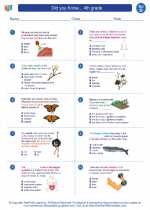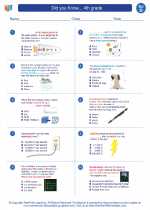Microscope
A microscope is a scientific instrument that is used to magnify small objects that are not visible to the naked eye. It is an essential tool in the field of biology and is used to observe cells, microorganisms, and other tiny structures.
Parts of a Microscope
- Eyepiece: Also known as the ocular lens, this is where you look through to view the specimen.
- Objective Lenses: These are the lenses closest to the specimen and provide varying levels of magnification.
- Stage: The platform where the specimen is placed for observation.
- Light Source: Provides illumination for the specimen.
- Diaphragm: Controls the amount of light passing through the specimen.
- Coarse and Fine Adjustment Knobs: These knobs are used to focus the image of the specimen.
Types of Microscopes
There are several types of microscopes, including:
- Compound Microscope: Uses multiple lenses to achieve high magnification.
- Stereoscope: Provides a 3D view of the specimen and is often used for dissections.
- Electron Microscope: Uses a beam of electrons to magnify the specimen and can achieve extremely high magnification.
Using a Microscope
When using a microscope, it is important to follow these steps:
- Place the specimen on the stage and secure it in place.
- Use the lowest power objective lens to focus on the specimen.
- Adjust the diaphragm and light source for optimal illumination.
- Use the fine adjustment knob to sharpen the focus.
- When finished, lower the stage, remove the specimen, and turn off the light source.
Study Guide Questions
- What is the function of the eyepiece in a microscope?
- How does a compound microscope achieve high magnification?
- What is the purpose of the diaphragm in a microscope?
- Describe the steps for using a microscope to observe a specimen.
[Microscope] Related Worksheets and Study Guides:
.◂Science Worksheets and Study Guides Fourth Grade. Did you Know... 4th grade
Study Guide Did you Know... 4th grade
Did you Know... 4th grade  Worksheet/Answer key
Worksheet/Answer key Did you Know... 4th grade
Did you Know... 4th grade  Worksheet/Answer key
Worksheet/Answer key Did you Know... 4th grade
Did you Know... 4th grade  Worksheet/Answer key
Worksheet/Answer key Did you Know... 4th grade
Did you Know... 4th grade 

 Worksheet/Answer key
Worksheet/Answer key
 Worksheet/Answer key
Worksheet/Answer key
 Worksheet/Answer key
Worksheet/Answer key

The resources above cover the following skills:
Core Ideas for Knowing Science
Life Science
Organisms are organized on a cellular basis and have a finite life span.